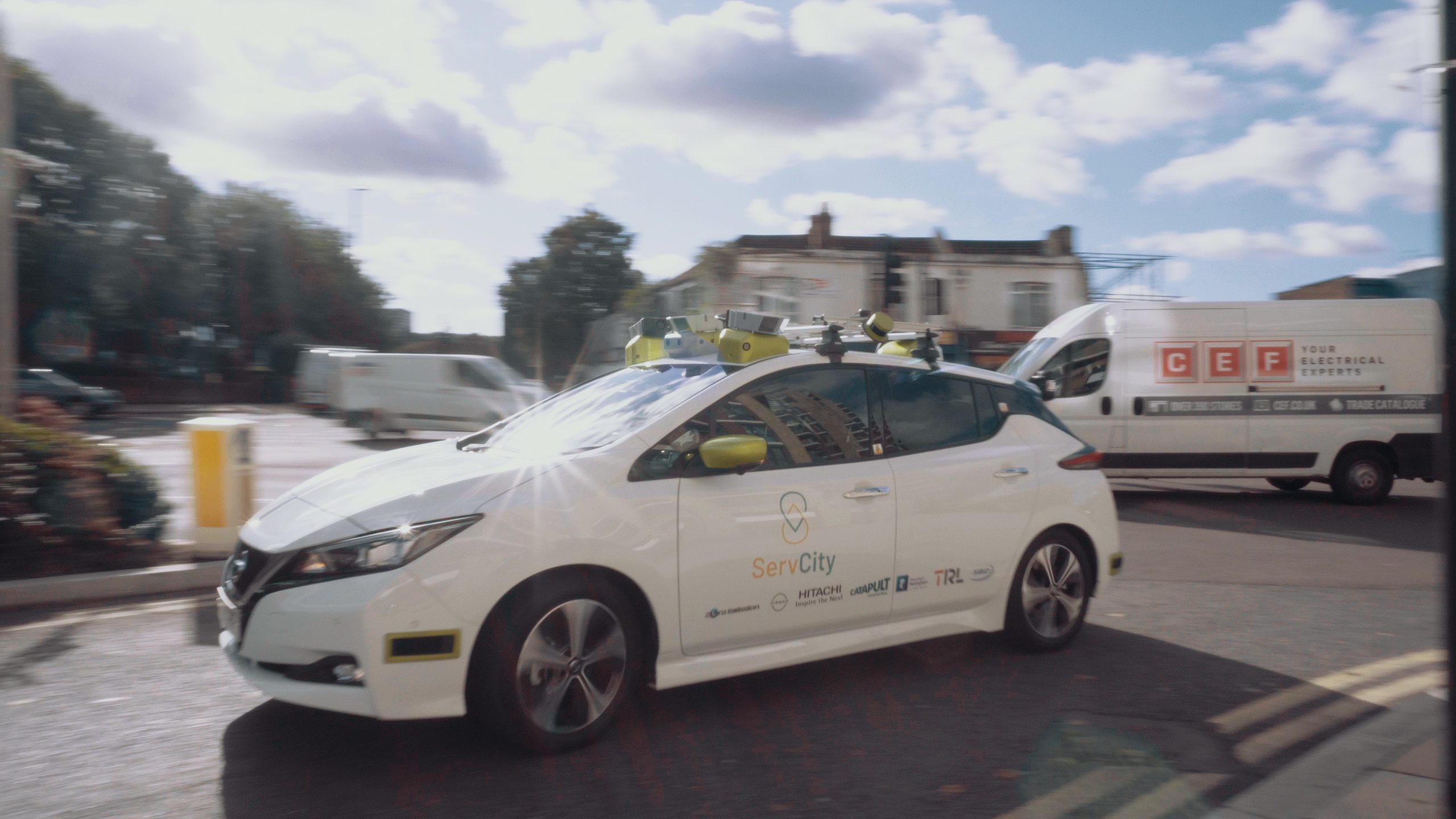 Foto: NISSAN
Foto: NISSAN
The current issue of the eMove360° magazine in german language (free download PDF) dedicates an article to the topic of autonomous driving in a complex environment. The Servcity Connected and Autonomous Vehicle (CAV) research project will be put through its paces in the heart of the British capital from October 21, 2022.
A large-scale research project is starting in Great Britain on the way to autonomous driving: As part of “ServCity”, Nissan and five other partners are now testing the autonomous driving technology in the heart of London. The three-year field test, financed equally by the state and industry, is intended to identify possible obstacles to the use of autonomous vehicles in cities.
After months of development, simulation and testing on private test tracks, ServCity is climbing to the next level: The ServCity Connected and Autonomous Vehicle (CAV) based on the all-electric Nissan LEAF will be put through its paces from October 21, 2022 in the heart of the British capital. To maneuver safely through the streets and avoid potential hazards, testing is taking place at TRL’s Greenwich-based Smart Mobility Living Lab (SMLL), which has the necessary infrastructural sensors and processing power.
A combination of test simulations, user reports and real tests shows the potential of future mobility solutions for cities – and how they can accelerate their introduction. ServCity focuses on the three key areas of technology, people and scalability. The user experience should be as intuitive, inclusive and “engaging” as possible. However, the project should not only make the autonomous vehicles more user-friendly, but also show that they can react quickly and safely to all kinds of challenges in everyday traffic.
Government fund for smart mobility
ServCity is supported by the Government’s £100m Intelligent Mobility Fund, managed by the Center for Connected and Autonomous Vehicles (CCAV) and steered by UK innovation agency Innovate UK. In addition to the Japanese car manufacturer Nissan and TRL, the British innovation agency Connected Places Catapult, the technology conglomerate Hitachi Europe, the University of Nottingham and the consulting firm SBD Automotive are also involved in the project.
“We are very proud to be part of ServCity and to use our all-electric Nissan LEAF as a test vehicle,” said Bob Bateman, Nissan Project Manager. “Our strategy aims at an electric, autonomous and networked mobility of the future. Together with the ServCity partners, we are working towards this goal.”
Strengths of the partnership
“Connected Places Catapult supports organizations in embracing new technologies and developing new services. ServCity is a perfect example of how we can use this approach to deploy autonomous vehicles at scale, moving towards intelligent mobility and better movement of people and goods,” adds Edward Mayo, program manager at Connect Places Catapult. “The tests in London are an important milestone for the ServCity project.”
“As a global leader in shaping the future of transportation, TRL is committed to developing safer systems that are accessible to all. The Smart Mobility Living Lab is a realistic urban test bed whose roadside sensor infrastructure and facilities support the development process of autonomous vehicles,” says Lucien Linders, General Manager of SMLL. “As the flagship of the CAM Testbed UK urban testing facility in London, we are in a unique position to test and prepare future mobility services for commercial deployment.”
“Hitachi’s European R&D group is focused on solving the complex technical challenges associated with autonomous driving in urban areas,” said Nick Blake, Chief Innovation Strategist at Hitachi Europe. “As part of the ServCity project, we are developing technologies for predicting and safely responding to other moving objects such as pedestrians, cyclists and cars, and for providing precise localization solutions.”
“Our team has extensive experience in conducting and analyzing user studies to evaluate human-computer interactions. We look forward to our role within ServCity to develop theories, models and methods for the user experience of the vehicle occupants. To that end, we will ensure that the design and development of the autonomous vehicle service is user-centred and truly meets customer needs,” said Gary Burnett, Chair of Transport Human Factors in the Human Factors Research Group at the University of Nottingham.
Andrew Hart, Director of SBD Automotive, affirms: “Robotaxis have the potential to transform mobility for both customers and the cities they travel. User experience is at the heart of this shift: operators must carefully balance customer expectations with real-world technological constraints. SBD is proud to be part of the ServCity project, bringing our decades of hands-on experience working with car manufacturers to define and test different approaches for a seamless Robotaxi experience.” www.servcity.co.uk; www.nissan.de
You can find this and other articles on the subject of mobility 4.0 electrically-connected-autonomously in the current issue of the eMove360° magazine in german language (free download PDF).